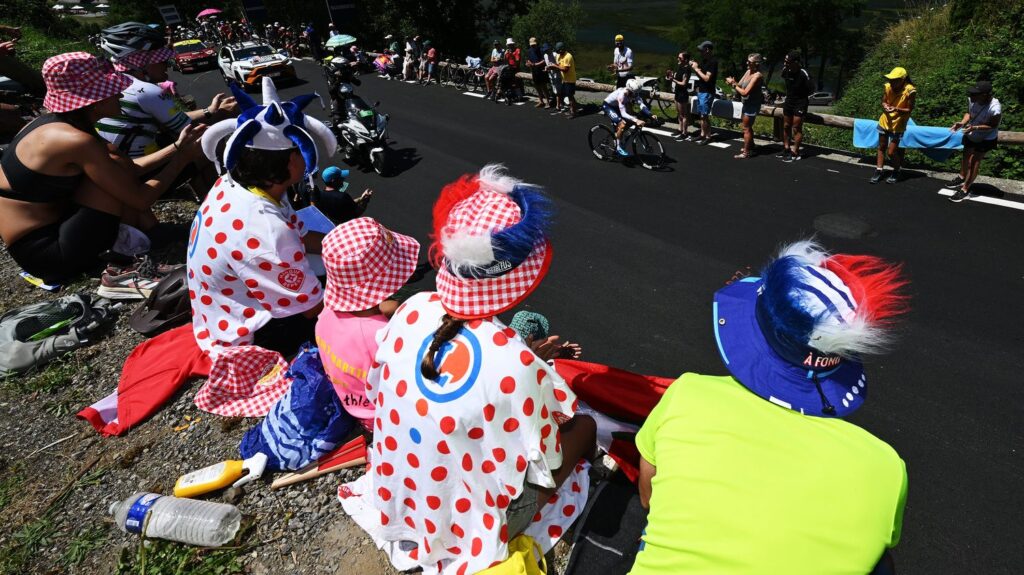
/2021/12/14/61b8b997d2d04_pierre-godon.png)
Published
Reading time: 4min
/2025/07/18/gettyimages-2225783403-687a5e31b9d80406504270.jpg)
Apart from Kevin Vauquelin, who clings to a good place to the general to hide misery, the comparison with previous editions hurts.
Thibaut Pinot and Romain Bardet in front of their TV, Julian Alaphilippe or Arnaud Démare who are no longer quite at their best, the helpless young generation in front of Tadej Pogacar in the mountains, the transition stages trusted by the kings of classics like Mathieu Van der Poel and the sprints arguing without real French challenger … The tricolor counters of Grande Boucle, edition 2025.
While the peloton benefits from a well -deserved rest after the Pyrenees, Monday July 21, not trace of a tricolor who lifted his arms after 15 trying stages. It has been 27 stages that we expect a French success on the Tour de France, since the victory of Anthony Turgis on the White Ways of Champagne on July 7, 2024.
The series may seem long, but the supporter knew worse not so long ago at the exit of the pandemic of Covid-19 with 37 stages of row without victory. The palm returned to the terrible series at the turn of the century: in 1999 during the famous “Tour du Renewal”, the Grande Boucle ended without a French victory.
It has been five years since the palm of the victorious nation of the greatest number of stages on the Tour is played out between Belgium and Slovenia. On the French side, since the end of the 2010 decade, a splendor, both in terms of the number of stages and in the general classification, with the podiums of Romain Bardet and the epics of Thibaut Pinot and Julian Alaphilippe, the trend is to a passage in the background. Again this year: only three out of 22 teams entrusted the leadership to a French runner. It was more than double in 2018 or 2019.
No more completely, the French runners? If we dig a little “almost victories”, it's very clear. The number of podiums on the stages has decreased year after year for ten years. It was not until a raging sprint of Julian Alaphilippe, on the arrival of the 15th stage in Carcassonne (Aude), to unlock the tricolor counter. Groupama-FDJ training, which has a number of three-color backpackers in its ranks, weighs very little on the debates, to the great despair of his manager Marc Madiot, who was sorry after a new failure in Toulouse: “We ran upside down. (…) The days parade, you should never let the opportunities that arise. We let one pass.”
This barometer of a certain downgrading of tricolor cycling would not be complete without looking at the distinctive jerseys. On the yellow jersey side, we are waiting for a successor to Bernard Hinault, the last tricolor winner 40 years ago all right, and a new Julian Alaphilippe who had made the crowds dream with an epic in yellow in 2019. Only 11 French runners put on the prestigious tunic in the 21st century. Including seven for barely day.
And it would be a mistake to believe that the Tricolores fall back on the classification of the mountain, failing to be able to hope anything generally. Admittedly, the French Lenny Martinez clings to the polka dot jersey, but remains under the threat of Tadej Pogacar, who will surely want to win a few stages in the Alps. Traditionally hunting guarded by the French, the scale of distributed points is now more favorable to the cadors which win the most demanding stages. As for the green jersey, it was never really a goal side, for lack of a regular sprinter that has passed the bumps since the 1990s. The last French in green in Paris, it was … Laurent Jalabert in 1995.
It remains to be hoped that Kévin Vauquelin, standard bearer of the new generation, manages to keep his beautiful place as a general and capitalize on his six top 10 stages since the start of the Tour to save the overall assessment, or that a long-distance escape stands out, since the general classification already seems sealed.

